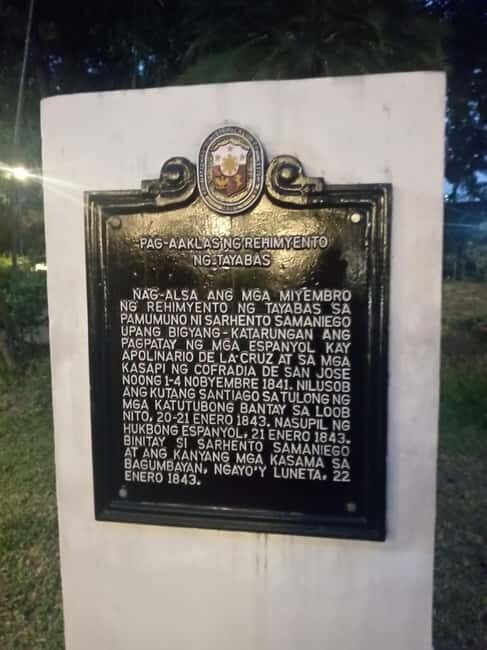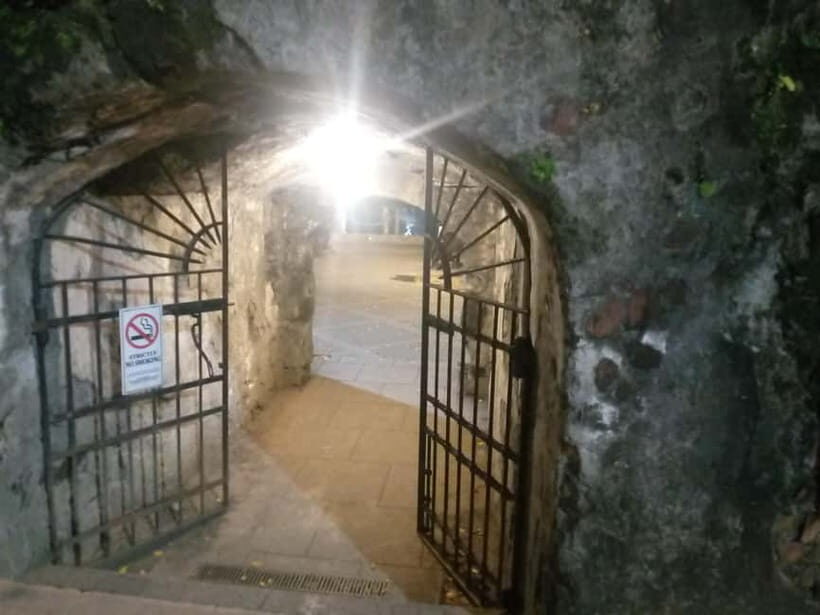Manila: Intramuros Rev Walk offers a compact yet meaningful way to step back into the Philippines’ turbulent history. For just $20, you’ll join a guided walk through the historic Walled City of Intramuros, visiting key sites like Fort Santiago, Manila Cathedral, and San Agustin Church. The tour typically lasts around two hours, making it perfect for travelers with limited time but a deep interest in understanding the Filipino fight for independence and resilience.
One of the top reasons we love this experience is how it emphasizes the struggle for freedom, connecting centuries-old battles to the modern Filipino spirit. The guide’s storytelling makes history come alive, especially when recounting events like Rajah Sulayman’s defiance or the Sangley Revolt. The tour also sheds light on lesser-known figures, giving you a richer picture beyond the usual tourist stops.
A possible consideration is that, at only two hours, this tour offers a snapshot rather than an exhaustive history. It’s a good primer but not an in-depth exploration. If you’re passionate about history or want a meaningful introduction to Manila’s past, this tour fits well, especially if you’re interested in revolutionary stories intertwined with architectural marvels.
This experience suits travelers who appreciate storytelling, want to connect with Filipino patriotism, and enjoy walking through historic streets with meaningful narration. It’s especially ideal for those short on time but eager to learn about Manila’s role in resisting colonization and shaping its identity.
Key Points
- Focus on Filipino Patriotism: The tour highlights the heroes and uprisings that fought colonial oppression.
- Historical Sites: Includes Fort Santiago, Manila Cathedral, San Agustin Church, and Rizal Shrine.
- Educational and Engaging: Guides share stories of battles, revolution, and resilience.
- Affordable and Compact: At $20, a rich historical experience in about two hours.
- Authentic Atmosphere: Walk through the historic walls and chambers where Filipino history unfolded.
- Insightful for All: Suitable for history buffs, students, and travelers seeking a meaningful Manila experience.
Exploring Manila’s Intramuros: An In-Depth Review

If you're drawn to exploring Manila on foot, we've looked into these other walking experiences
The Starting Point: Fort Santiago and Its Significance
The tour kicks off at Fort Santiago, arguably the most iconic site within Intramuros. This fortress has long symbolized resistance and resilience. As you approach, you’ll notice its imposing stone walls and the lush greenery that surrounds it. Inside, you’ll find the last prison cell where Dr. Jose Rizal, the national hero, was detained before his execution—an image that echoes Filipino patriotism.
Guide Kevin (if you’re lucky enough to have him) often emphasizes the underdog stories of Filipino patriots from the pre-Hispanic era through the colonial struggles. We loved how he connected the stones and chambers to stories of Rajah Sulayman, who in 1571 challenged the Spanish invaders, and Andres Novales, who led a revolt in 1823. These stories are woven into the very fabric of the walls, making history tangible.
Walking through the dungeons, we got a sense of the hardship faced by prisoners—imagine the thin air and cold stones where hundreds of Filipino and American prisoners of war once stayed. The tour points out their mass grave, a somber reminder of the sacrifices made. As one review put it, “You can’t help but feel the weight of history in these rooms.”
Manila Cathedral: The Power Struggles of Faith and Authority
Next, the tour moves towards Manila Cathedral, a structure that has seen centuries of Manila’s religious and political upheavals. The guide shares stories of conflicts between the church and state, reflecting how Filipino society has historically balanced faith and governance. While the Cathedral itself is a marvel of architecture, it’s the stories of resilience and power struggles that truly resonate.
From the guide’s narrative, you’ll learn how this church has survived earthquakes, wars, and political upheavals, acting as a silent witness to Filipino perseverance. The cathedral’s interior, with its ornate details, offers a peaceful contrast to the turbulent stories outside.
San Agustin Church: An Architectural and Historical Treasure
A short stroll along General Luna Street brings you to San Agustin Church, the oldest stone church in the Philippines. This UNESCO World Heritage Site is a must-see. Its baroque architecture and centuries-old interiors tell stories of resilience amid natural calamities and war.
Visitors often comment on how the resiliency of San Agustin is reflected in its sturdy walls and beautiful altars. The guide highlights its survival through multiple earthquakes, including the 1863 quake that wrecked much of Manila. Its historical archives contain tales of Manila’s faith and endurance, making it more than just a pretty building.
More Great Tours NearbyRizal Shrine and the Fight for Independence
The tour then shifts focus to the Rizal Shrine, where you’ll learn about Jose Rizal’s role in inspiring the Filipino revolution. The last prison cell where he was detained is filled with stories of reform and revolution, showcasing how his ideas sparked hope and resistance. It’s a moment that often leaves visitors contemplative, realizing the impact of one man’s courage.
The Changing Face of Intramuros: Calle Real and Beyond
Finally, the tour winds through Calle Real, once the bustling commercial heart of Intramuros, now a place where modern life contrasts with the centuries-old walls. The guide points out how the area has transformed, yet still echoes with stories from different eras.
The Experience: What You’ll Really Take Away
Throughout the walk, the guide’s storytelling makes history accessible and engaging. We appreciated how specific stories of patriots, uprisings, and resilience were tied to the physical sites, making each stop meaningful. The tour’s focus on milestones like the Sangley Revolt (1603) and Novales Revolt highlights episodes that often get overlooked but are vital to understanding Filipino resistance.
Reviewers consistently mention how the stories help them see Manila’s walls not just as stone structures but as symbols of ongoing struggle and hope. One said, “You start to see the city’s history in a new light, realizing it’s about people fighting for their identity.”
Practical Details: What to Expect
- Duration: About 2 hours, making it perfect for a quick yet meaningful history fix.
- Price: $20 per person, which includes entry to Fort Santiago—an excellent value considering the sites visited.
- Language options: Tours are available in English, German, and Chinese, catering to diverse travelers.
- Meeting point: Varies depending on booking options but generally easy to find within Intramuros.
- What to bring: Comfortable shoes, light clothes, cash, and biodegradable insect repellent for comfort during the walk.
Final Thoughts: Is It Worth It?
If you’re interested in Filipino history, patriotism, or just want to walk through a historical neighborhood while hearing stories of heroism and resilience, this tour offers a compact yet potent experience. It’s especially rewarding if you’re the kind of traveler who enjoys understanding the stories behind the sites—rather than just looking at them.
While it’s a brief overview, the depth of storytelling and focus on Filipino uprisings set it apart from more superficial tours. It’s suitable for history enthusiasts, students, or anyone seeking a meaningful connection with Manila’s past without straining your schedule.
FAQs

Is this tour suitable for children?
It’s generally suitable for older children who can appreciate historical stories, but children under 2 years old may not find it engaging.
How long does the tour last?
The tour typically lasts around two hours, making it manageable for a half-day activity.
What sites are included in the tour?
It includes Fort Santiago, Manila Cathedral, San Agustin Church, Rizal Shrine, Baluarte de Dilao, Memorare Manila 1945, Puerta del Parian, among others.
Is the tour accessible for people with mobility issues?
The tour involves walking through historic streets and sites, which may have uneven surfaces. It’s best to check with the provider about accessibility needs.
Can I book the tour and pay later?
Yes, you can reserve your spot and pay later, providing flexibility in planning your trip.
What language options are available?
Tours are offered in English, German, and Chinese, accommodating a variety of travelers.
Is there a recommended age limit?
It’s not suitable for children under 2 or for people over 95, mainly due to walking and the physical nature of the tour.
What should I bring?
Comfortable shoes, light clothing, cash for souvenirs or extras, and biodegradable insect repellent.
Are entrance tickets included?
Yes, tickets to Fort Santiago are included, adding value to the $20 price.
Is this tour suitable for solo travelers?
Absolutely. It’s a group tour, but it’s friendly for solo travelers looking for an engaging, educational experience.
In brief, the Manila Intramuros Rev Walk offers a meaningful glimpse into the Filipino fight for independence through well-chosen sites and compelling stories. It’s an affordable, accessible way to understand the city’s past, perfect for history lovers, curious travelers, or those seeking a deeper connection during their visit to Manila.
You can check availability for your dates here:More Walking Tours in Manila
- Manila: Intramuros Walking Tour.
- Solo Traveler Friendly Manila Walk w/ Mobile Photography
- Intramuros Walking Tour by Don’t Skip Manila | Shore Excursion
- Intramuros Walking Tour with Transportation by Don’t Skip Manila
- Viva Old Manila: Intramuros Walking Tour
- Manila: Old Manila Intramuros Area Walking Tour
More Tour Reviews in Manila
- Manila Airport Chauffeur service Manila Airport private Transfer
- Manila Historical Highlights Private Half Day Tour
- Private Half-Day Makati (Old Manila) with Intramuros
- Private Tour: Tagaytay Midlands & Taal Volcano Boat Ride
- From Manila: Little Boracay Beach w/ Floating Bamboo Cottage
- Private Arrival Transfer: Ninoy Aquino International Airport to Manila
More Manila experiences we've covered
- Manila Airport Chauffeur service Manila Airport private Transfer
- Manila Historical Highlights Private Half Day Tour
- Private Half-Day Makati (Old Manila) with Intramuros
- Private Tour: Tagaytay Midlands & Taal Volcano Boat Ride
- From Manila: Little Boracay Beach w/ Floating Bamboo Cottage
- Private Arrival Transfer: Ninoy Aquino International Airport to Manila
- Shared Half-Day Shore Excursion in Manila
- Experience Manila’s Heritage: Intramuros & More in Half a Day!
- Bataan Death March memorial tour
- Embark on a 7-Day Banaue-Sagada Adventure of a Lifetime
- Wonderful Snorkeling Trip from Manila! updated 2023***
- Manila: Taste and See Authenticity
